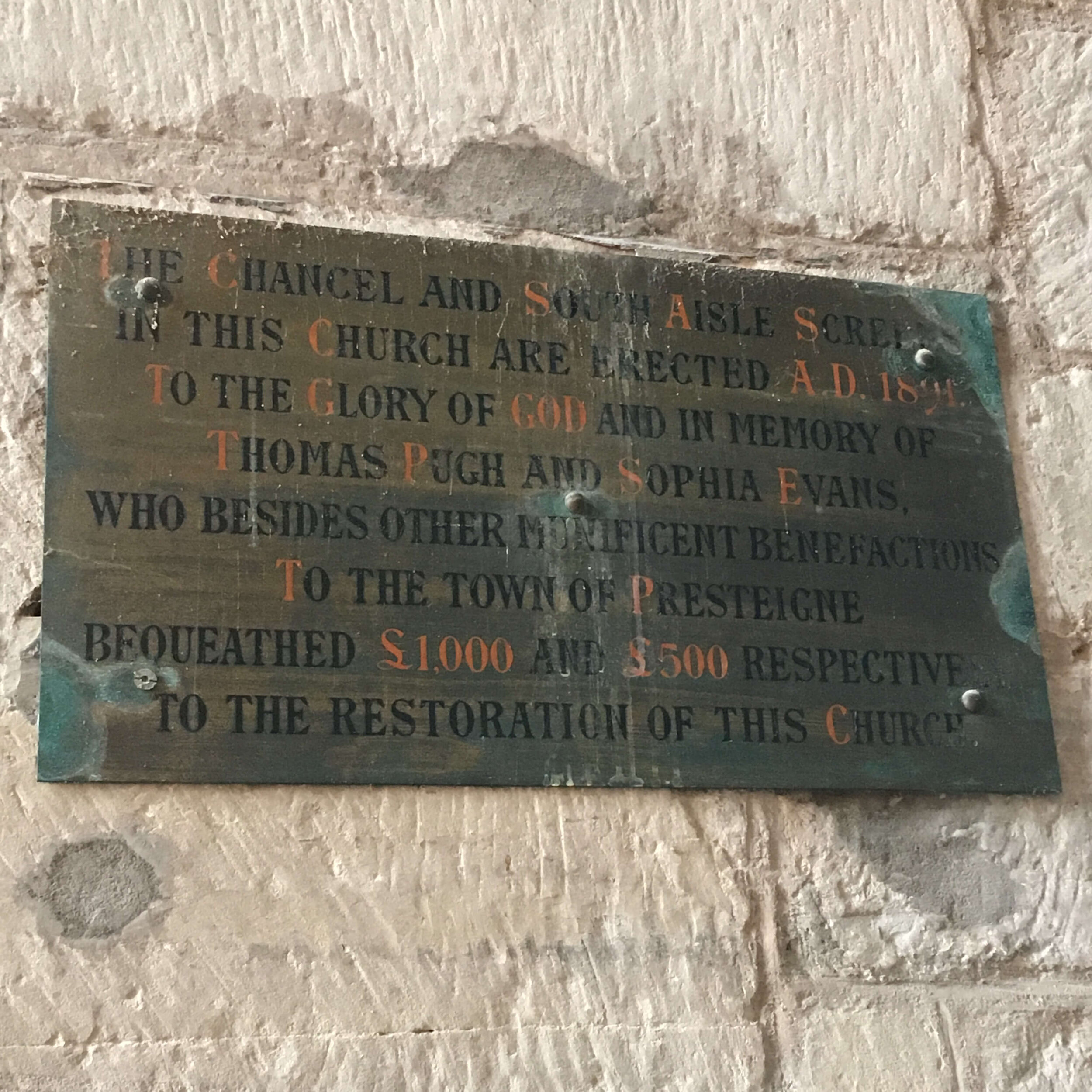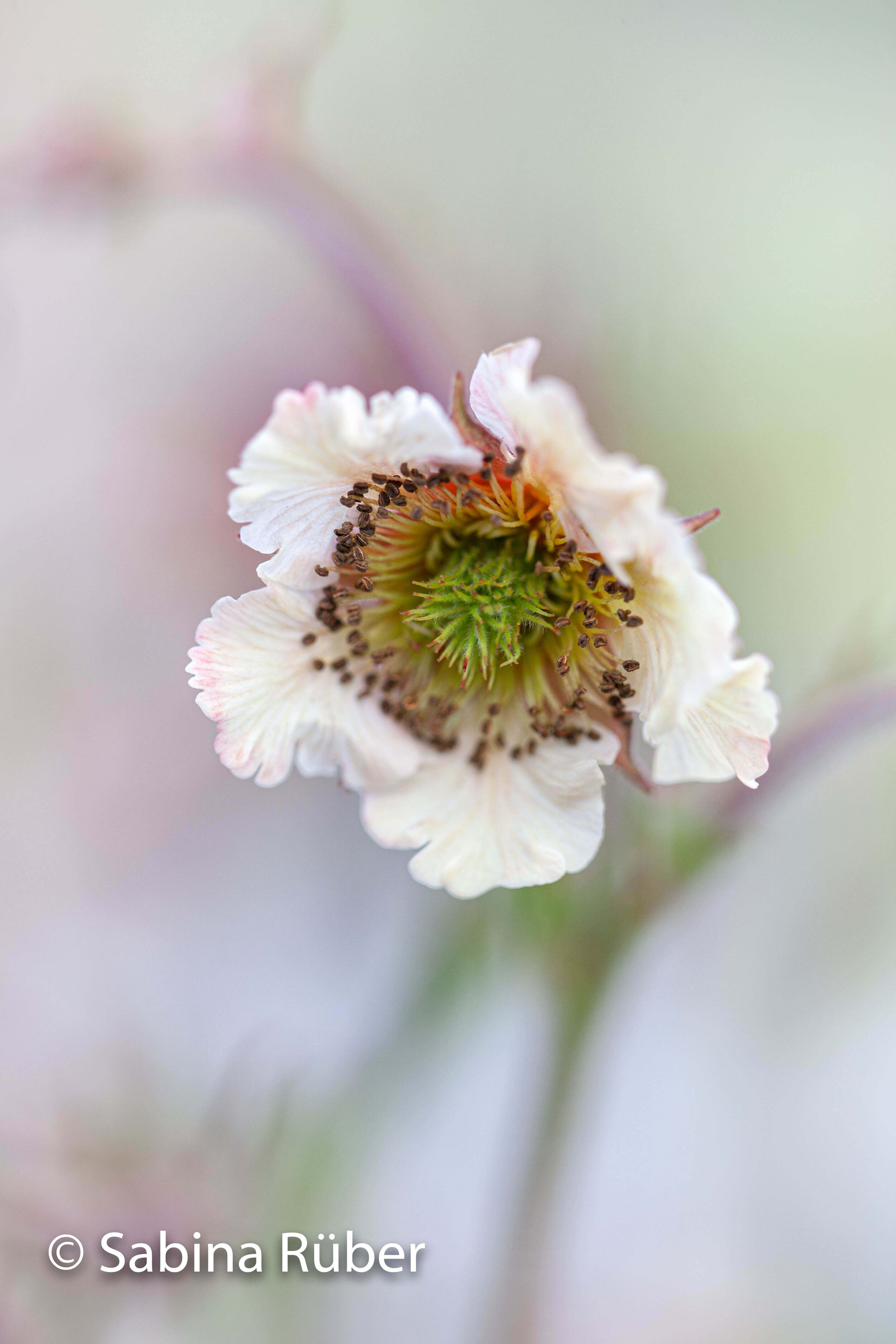From Powys With Love
Hi Gang and welcome to the fourth issue of The Lugg Blogg.
Nine years ago when I started a website called BroadsheepTV I was very taken with the various YouTube channels that were presenting music in original settings with quite basic audio and visual equipment. My favourites were Amsterdam Acoustics, mostly shot on the hoof in the streets and trams of Amsterdam, and Balcony TV which came from all over the world but was always shot on a (sometimes very small) balcony. This inspired me to start filming bands in my own front room and I was delighted to see today that most of those dozen films are still up on YouTube. Martin Harley has had 36,000 views, Moishes Bagel 12,000 and even Little Rumba’s 3 videos have clocked up 16,000 views.
When lockdown started, I revisited some of those sites to look for nice bits of film for this blog but I got hung up on NPR Music Tiny Desk Concerts. NPR is an organisation that promotes independent radio stations in the US and they are massive music fans. All the concerts are shot in a very small space in their offices and alongside the big names - Tom Jones. Lianne LaHavas, and Coldplay they seem to have a knack for finding the very best lesser known acts. The sound quality is excellent and the filming is very unobtrusive.
I spent a couple of days completely immersed in their stuff and here are 3 of my favourites but go and have a look for yourself and be amazed by cross-dressing Korean Ska bands (Ssing Ssing), wild free jazz funk saxophone duos (Moon Hooch), and Ukranians playing tight-knit tunes featuring accordion, drums, reeds and shakers while wearing tall, Marge Simpson-looking wool hats (Dakha Brakha). Each act just gets 3 songs to do their stuff sort of like an open mic night at The Wine Bar.
Here is the first the deadpan and extremely talented masters of randomly poured bits of water and effortless harmony vocals about prawns ‘Superorganism’.
Next the Jimmy Hendrix of the Hawaiian Ukulele ‘Taimane” watch out for the visiting polynesian dancer.
Finally a great young Texan community rock and roll band 'Mother Falcon'. I particularly like the guitarist down the front who at the end of 11 minutes gets seized by emotion and jumps onto a chair to idiot dance and wail!
Pete
BALDWIN & GUGGISBERG - Philip, Monica and Team Hares Green
Up here we have been very privileged indeed, which makes us cringe a bit with guilt frankly, as so many others for whom this latest chapter in our current edition of modern times is a very far cry from anything resembling "privileged".
Be that as it may we find ourselves in the odd place of being flat out; locked down with our two assistants; Philomène and Léon for nine weeks now, we have been able to go on working. A major opening at a museum in Denmark in April was postponed to June, and we were sure it would then be postponed until August or September. But no! the museum opens this week, they are desperate to get back on their feet, and we are commanded to get it up and running for June 12th. No opening, no festivities, but up! The title of the show is Walking in the Void, and while the installations and exhibition theme were established prior to Covid, the existential crisis in which we now find ourselves is nevertheless implicit.
Here's a few photos, of some of the things we have been making, and which will be present at the museum, followed by Monica’s brilliant lemon pasta recipe. A fine Bank Holiday Monday to one and all, and with our thanks for these lovely blogs.
On Saturday night Philip had a new pasta lesson from Monica - one of the best ever!
LEMON PASTA FOR FOUR PEOPLE
Pasta (500 grams)
4 nice, chunky cloves of garlic divided in half and flattened with knife
The grated peel of one big lemon (organic if possible –alleviates the toxins in peel)
The lemon itself - for it's juice
A smattering of hot red paper flakes
A dozen cherry tomatoes, quartered
A healthy dose of grated parmigiano reggiano and pecorino circa 50/50 or whatever you prefer
A handful of basil leaves broken up or rosemary, as you prefer
Olive oil for the sauce cooking, generously
Heat the water, add salt when it reaches a boil, and throw in the pasta (thinnish spaghetti is best in this case). Meanwhile, in a large wide pot - as wide as a frying pan where possible): Olive oil, garlic, red pepper flakes, and lemon shavings, heat on a very low heat to infuse flavours, while pasta is cooking - maybe seven or eight minutes, then as pasta nears completion - but still a few minutes off - raise the heat on the sauce a little bit and add in the tomatoes.
Now after draining off the pasta water (pasta still a bit too al dente) - but saving a bit to the side - throw the pasta into the big sauce pot and keep stirring. Stirring continually, add bit by bit the cheese (plus a bit of olive oil as you go). Next squeeze in every last drop of lemon juice from the big lemon, and the rest of the cheese. Having saved a bit of pasta water to the side, add in to keep or gain the desired liquidity to give the feeling of a creamish sauce (but it isn't - there's no cream - which is part of it’s charm!)
Finally, when the pasta is al dente perfecto, add in the basil leaves, a last splash of olive oil, and a turn or two of black pepper. Buon appetito!
ROCK’N’ROLL R.I.P. - Mark Williams
This wretched, appallingly managed lockdown has seen the deaths of too many icons of what could justifiably be called my generation’s musical golden era. Some of them, like the Stranglers’ Dave Greenfield or Kraftwerk’s Florian Schneider I paid little attention to during their pomp, but in the Time Of Corona, there was, and is, something about their passing that gives me pause to reflect more deeply on the parts they played – apologies for the tortured homonym – than we otherwise might. Perhaps this is because under this enforced quarantine, we have more time to think anyway, or perhaps it’s because they were part of a life, and a cultural landscape, that will never be the same again.
However for me the most noteworthy recent departure was Richard Wayne Penniman, better known as Little Richard, who with his 1955 hit, Tutti Frutti, quite simply changed the way and the reasons we listened and danced to music. Indeed author Mark Lewisohn in his masterwork The Beatles: All These Years, noted that for another musical hero, John Lennon …”it seemed everything in his life to this point had been a contrivance. This (Tutti Frutti) was reality. In its immediacy, its energy, (this) was life itself.” No wonder, then, that in 2007 Mojo magazine put that record at No. 1 in its ‘100 Records That Changed the World’.
But I honestly can’t say it changed mine at the time and it wasn’t until 1979 when as a jaded rock journalist I saw Richard perform at the Whisky a’Go-Go in Los Angeles. I’d gone to review the first of two shows either for Melody Maker or Slash magazine – can’t remember which – but I was literally stunned by his sheer mad energy allied to a vocal and instrumental musicality that knocked anything I’d ever seen or heard before into a limp Tower Records bag, to the extent that I blagged a pass for the second show that evening and saw the bomb go off a second time. My friend Mr Fielden witnessed Richard entering the rear of the Bournemouth Winter Gardens in 1963 whilst the Rattles (a/k/a the German Beatles) were playing their set on a bill that included Bo Diddley, the Rolling Stones (in neat matching suits!), only to be restrained by security staff as he disrobed to his underpants whilst shouting, ‘I am the King, I am the King’ – which of course he was! You wouldn’t get that nowadays with Ed Sheeran…
Richard wasn’t exactly the greatest ivory-tinkler, but his keyboard skills perfectly complimented his raw, pile-driving compositions and no-holes-barred vocal delivery which, by the way embraced a considerable range for an out-and-out rocker. Need proof? Get hold of a DVD of Jayne Mansfield’s 1956 outing, The Girl Can’t Help It and be knocked out as the screen goes from narrow to wide, monochrome to colour as Richard and his band explode into the title track. Pure rock’n’roll magic. But in the meantime here’s a rather grainy vid of Mr Penniman performing the Beatles’ I Saw Her Standing There:
Much nonsense has been written about the L.A. music scene during the late ‘70s and early ‘80s – some of it by yrs. trly. – which was an odd cocktail of big-haired metal (Motley Crue, Ratt), three-years-behind-the-curve punk (Bags, Germs, X), west coast prog rock (Eagles, Feat, Jackson B.) and rather good indie-pop (Jules & The Polar Bears anyone?) plus the women, the motorcycles, the endless sunshine, booze and drugs all of which I relished. The Starwood Ballroom, Whisky, House of Blues, Roxy and other, smaller venues meant music and vodka grapefruits almost every night, but Little Richard was by far the best show I ever saw at the Whisky until, that is, Captain Beefheart played four straight nights there a few months later… but that’s perhaps another story for a different lockdown.
Link to Mark’s new Corona Coping Blog here: markswill.wordpress.com
MAKING THE MOST OF THE LOCKDOWN - Sara Bamford
During the lockdown we have had lots of time for all sorts of lovely activities; growing lots of veg in David’s very new greenhouse and after a lot of time making horses I have had a break and completely tidied my shed…
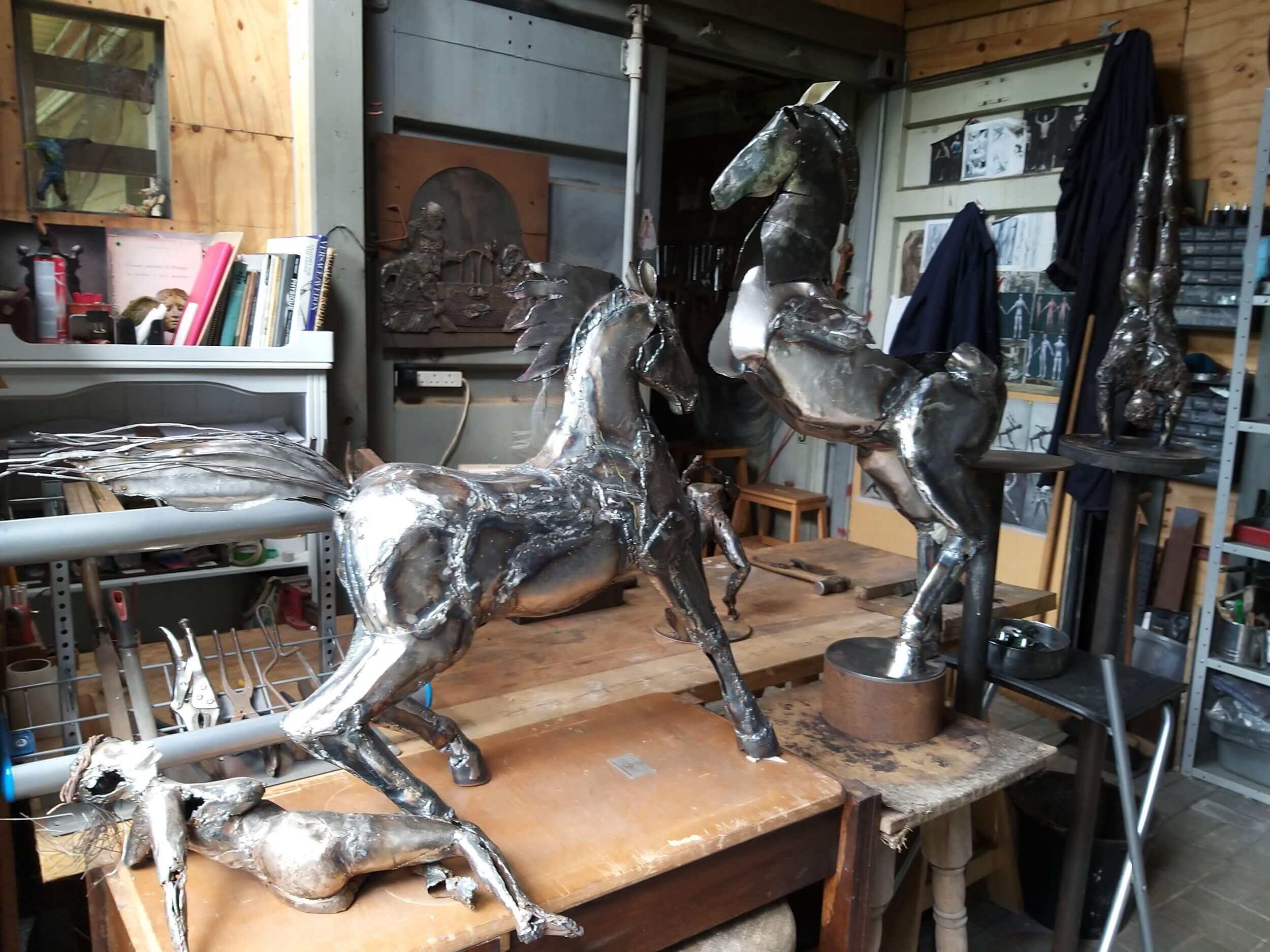


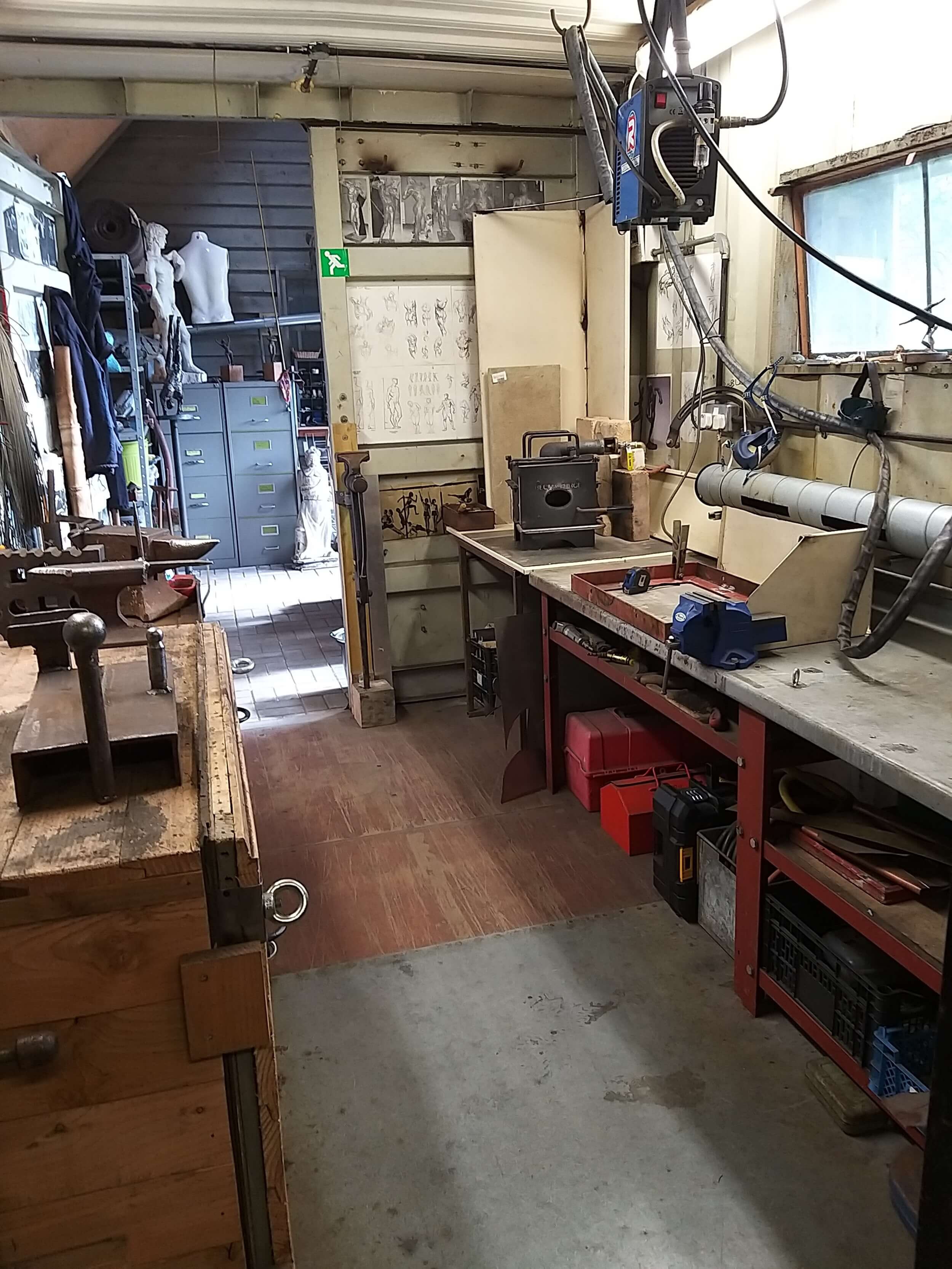
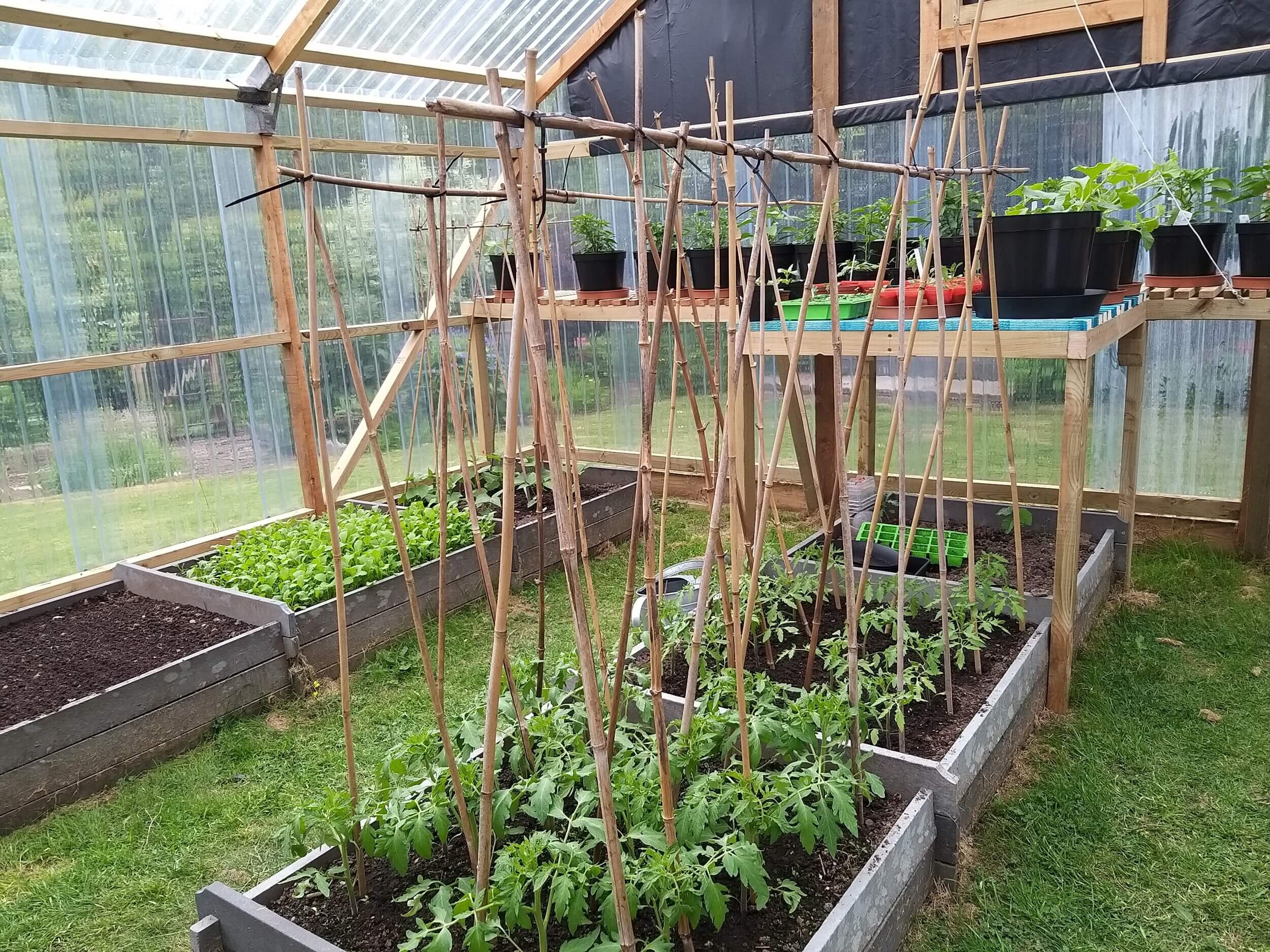

Remembering the good times!
Sara
THE PRESTEIGNE LOCKDOWN LIP SYNC - Kay Foreman
An amazing performance - our very own Mr Richard Stafford (Aka Salt) steps up to the plate for Presteigne lip synching with such a cool and smart rendition of this swingy little number. We absolutely loved it!!! As always Salt is in great form and gives an effortlessly slick performance. Salt has indeed set the bar very high... Thank you sooo much.
Wait – another entrant! Here's something wonderful – full of charm and elegance. A truly outstanding performance by Pope and very good to see the understated naturalistic performances from the supporting actors:
Any more takers? What about joining in with the lockdown sync performances? Those of you who feel the need/are up for a bit of a performance are very welcome to contribute - all age groups, the more the merrier! Choose your own song or, if you need a suggestion, email us and we will give you a song to lip sync to. Perhaps lockdown households would like to make costumes and props too. Send the video in to us via direct email or via WeTranfer. We will air the performances that wowed us the most. But most of all, have fun!
SCREEN TIME: An architectural detective story in St Andrew’s Church - Clare Stevens
It is one of the very odd features of Coronavirus lockdown that we can negotiate the narrow doorways and aisles of Premiere or Spar and pick up a newspaper, a six-pack or a bag of sweets, but we can’t slip into a spacious church to light a candle for a loved one or spend some time in prayer or reflection. All the town’s churches are currently locked, seven days a week.
There has been a place of worship on the rising ground just above the Lugg Bridge since Anglo-Saxon times – you can still see the blocked-up arches of much smaller, older buildings in the north aisle of St Andrew’s, Presteigne’s Church of England parish church, most of which probably dates from the 14th, 15th and early 16th centuries. The three large windows in the south aisle which fill our church with light are 15th-century – in his history of the church Keith Parker rightly compares their beautiful tracery to some of the windows in Gloucester Cathedral.
Another striking feature of St Andrew’s is the carved wooden screen that separates the nave from the chancel and the Lady Chapel at the east end. Its slender pillars can be wrapped around with vibrant red poinsettias and greenery at Christmas, or decorated in yellow for Easter or white for a wedding. Even when it is left unadorned, it draws the eye of anyone coming into the building.
Although the delicate carving around the arches of the screen echoes the tracery of the south aisle windows, it is much later in design. The church guide includes photos of how it looked for most of the 19th century, with a clear view from the west end all the way to the east window, which depicts the Crucifixion and the Ascension of Christ. The stained glass window was a gift in 1855 from Mrs Sophia Evans, in memory of her brother.
The screen was in turn installed in 1891 ‘to the Glory of God and in memory of Thomas Pugh and Sophia Evans’, according to a rather battered brass memorial tablet which notes that they ‘besides other magnificent benefactions to the town of Presteigne bequeathed £1,000 and £500 respectively to the restoration of this church’.
When I came to live in Presteigne ten years ago and started getting to know the town I skim-read the church guide book and hardly noticed the picture captions stating that this restoration was carried out by J A Pearson. But when I recently reread the book more carefully I did a double take. ‘J A Pearson’ is not a familiar name but J L Pearson – John Loughborough Pearson – was one of the most distinguished church architects of the later Victorian period, responsible for designing Truro Cathedral and some of the most stunning Gothic Revival churches in the UK, such as St Augustine’s, Kilburn (often used for BBC Proms concerts in the 1970s and 80s because of its superb acoustics) and St George’s, Cullercoats, which sits dramatically above the sand dunes overlooking the North Sea not far from Newcastle-upon-Tyne. He also did a lot of work on Bristol Cathedral and Westminster Abbey, where he succeeded George Gilbert Scott as Surveyor to the Abbey.
Could this famous architect have worked on St Andrew’s Presteigne, I wondered? Pearson was renowned for his elegant designs and his ability to enhance the sense of height and space in his buildings; had he worked his magic here too?
I reached for a biography of Pearson which I couldn’t resist buying after hearing its author, Anthony Quiney, giving a talk about the architect in another of his churches, St John’s, Upper Norwood in South London. Yes, there was ‘Presteign’ (without its final ‘e, in true Victorian style) in the index. But it said ‘Presteigne, Powys, St Edward, 287’. That’s strange – because our church is of course dedicated to St Andrew.
I turned to page 287, where ‘PRESTEIGN, Radnors.; Powys) St Edward’ features in the long catalogue of works by JL Pearons and his firm, based on a list compiled by Ernest Newberry for the Architectural Review in 1896 and references in the files of the Incorporated Church Building Society and The Building News. The entry reads:
Restoration, for Charles E. Maddison Green 1889-91
Repair of nave, new floor and roofs to nave and aisles; Saxon remains, and frescoes over north nave arcade uncovered. Brass crucifix and candlesticks probably by Pearson, teak chancel screen, stone pulpit, doors, west windows of aisles
That’s quite a lot of work! And it certainly corresponds to the late Victorian restoration and embellishment of Presteigne’s parish church. But why did Anthony Quiney think it was called St Edward’s? He states in his introduction to the catalogue of Pearson’s works that as part of his research he visited all the extant buildings designed by Pearson in England and Wales … perhaps he was getting tired by the time he reached Radnorshire, and mixed up our church with another one.
As it happens there is a St Edward’s Church just seven miles from Presteigne, at Knighton. Did Pearson perhaps do some work there as well? I consulted the index again. Yes, there it is:
KNIGHTON (Radnors.; Powys) St Edward
New chancel, to church rebuilt by S Pountney Smith 1875-7
1896-7
Three bays with south organ chamber. Tall lancets, triplet in east window. Of local stone, arch-braces collar roof, slated.
The final proof I needed, however, that I have accidentally become a regular worshipper in a church enhanced by the work of one of my favourite architects was when I came across a copy of a previous church guide leaflet, its cover mottled and coffee-cup-stained stained. There is his name, this time with its correct initials: ‘The teak screens at the entrance to the chancel and at the entrance to the Lady Chapel were designed in about 1889 by J.L. Pearson, who also designed the pulpit.’
We hope it won’t be too long before the church doors are open again for individual visits, if not for services. When that time comes, do go in and have a look, and enjoy the craftsmanship in stone and wood with which John Loughborough Pearson and his team enhanced this ancient building 120 years ago.



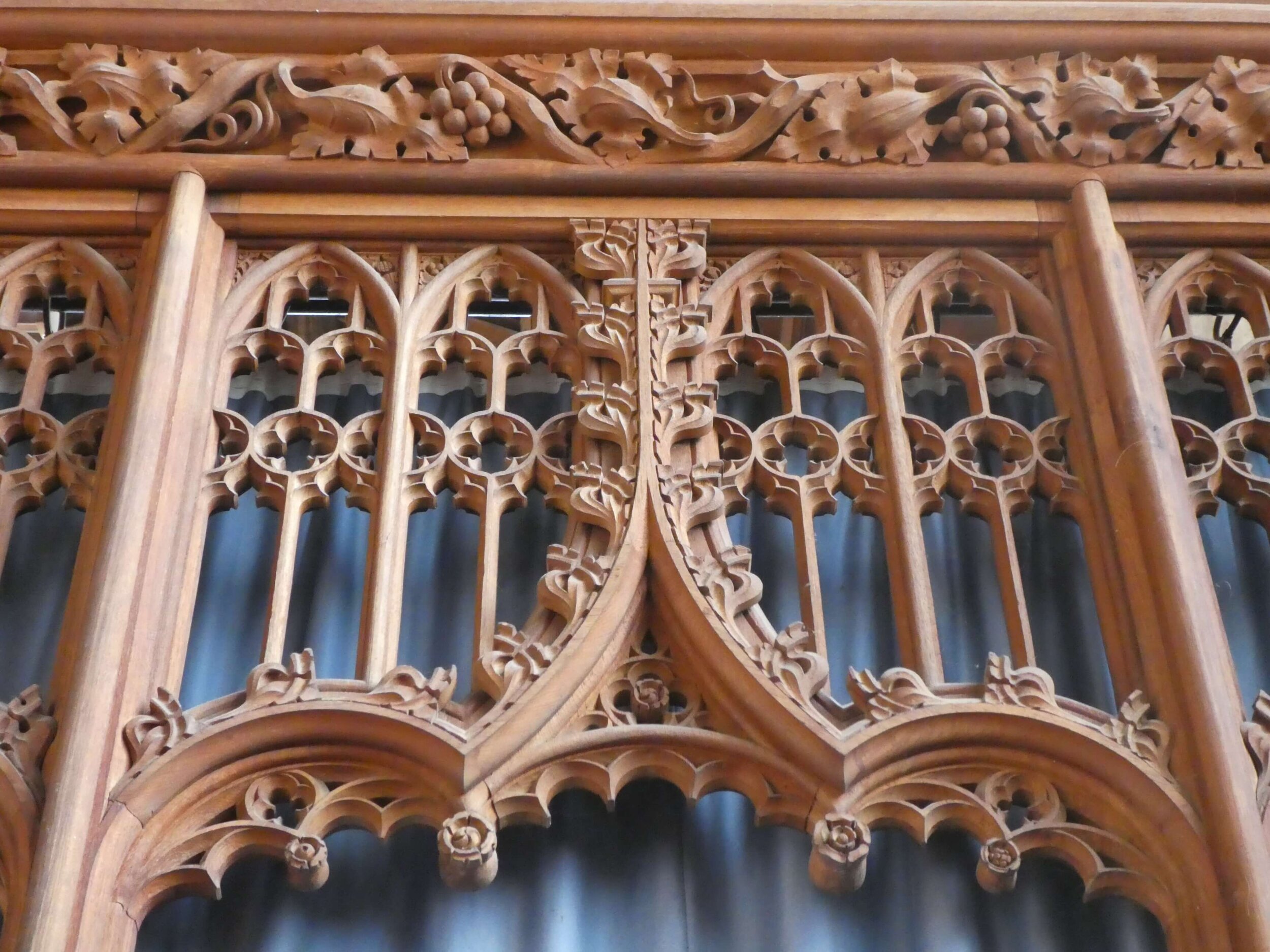
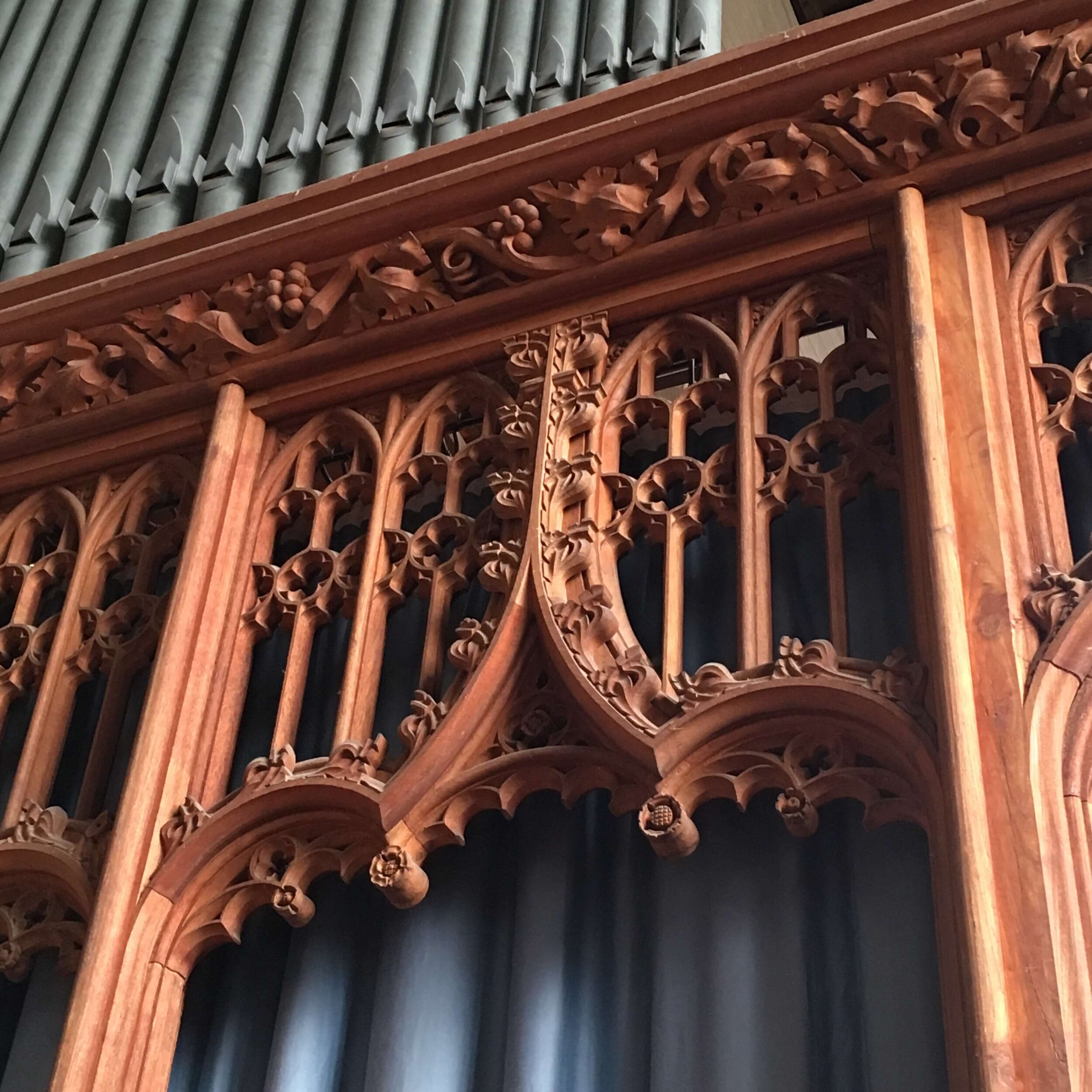


All photos of St Andrew’s Church by Clare Stevens – interior shots taken before lockdown.
GARDENIA - Ian Marchant
'Both Arthur Ebeling and Your Dad played a fair bit in Presteigne over the years, and sometimes on the same bill. Old Chas Ambler, my musical partner, loved Arthur's song 'Gardenia', so he came up with an arrangement featuring our occasional pick-up string section, the Cheesestrings. The Cheesestrings never existed as such - rather, it was a thing that happened if a few players turned up to a gig who could read, not just music, but Chas's musical notation. We never rehearsed with them, because we were never sure who would turn up. I found this recording, live at Lancaster's Gregson Centre in 1998, and I reckon the Cheesers had a pretty convincing shot at it.'
Alex Ramsay
It doesn’t look as though I’ll be doing any exhibitions any time soon, so here are a few pictures to be going on with.
© Alex Ramsay Photography
KEEPING IN TOUCH DURING LOCKDOWN - John Hymas
This is a song I wrote at the start of lockdown for my “odd” daughter Gwendolyn who lives in London.
GARDEN @ No 3 - Sabina Rüber
One of the wonderful things about a garden as the season progresses is the continued coming and going of favourites. Once one is finished another one opens up. Like friends, they visit - come and go, bringing joy. They'll remind you of them too - plants coveted in someone else's garden find their way into yours, reminding you of the gift and them.
The last two weeks have been madly busy with tulips and now they are fading the rest of the garden is catching up - with Alliums and Geums to the fore. The scents are now more intimate. Whilst the wisteria was enjoyed by our neighbours too, for these new ones, you need to get in close to appreciate them.
Convallaria majalis (lily of the valley) - it's beautiful sweet scent belies the fact that it is highly poisonous. The delicately scented pale yellow Iris flavescens travelled with me from my Grandfather's garden in Switzerland. A treasure.
On my wish-list for scent - lilac Syringia. Always with us in our thoughts ‘David’s Tree’ - Amelanchier lamarckii...
Tulip ‘Blue Parrot’ and ‘Menton’ - towered over by Angelica archangelica. Fading ‘Menton’ with vivid Allium ‘Purple Sensation'.
'Green Wave’ a late flowering tulip variety still looking fresh and the last flowers of ‘Aveyron’ in a bunch.
The fabulously bright ’Totally Tangerine’ which will flower and flower …
A very red ‘Mrs Bradshaw’ - and again contrasting with Lysimachia ‘Beaujolais'
Some more subtle colours: the peachy ‘Mai Tai’ and the beautifully understated ‘Maddy Prior’ bred by Roger Proud in Cumbria.
And unnamed seedlings - so moreish …
MID BORDER ARTS
This Friday should have seen a fantastic evening of music at the Assembly Rooms. Following their scheduled appearance in Hay the evening before, ZRI were due to delve into the gypsy roots of Brahms’ music and show us a side of Brahms that we may never have imagined. ZRI stands for Zum Roten Igel, or To the Red Hedgehog Tavern, a 19th Century Viennese drinking joint that saw folk and gypsy musicians along with some of the great classical composers such as Schubert and Brahms. The ensemble started with the Brahms clarinet quintet, re-scoring it to include santouri (like a dulcimer) and accordion so as to bring it into a sound world that inspired Brahms throughout his life.
All the members of ZRI are classically trained but it is not unusual for audiences to find themselves on their feet, dancing in the aisles. Not something you’d expect from a chamber quintet…
With musical bonds and friendships stretching back into early childhood, ZRI formed under the direction of clarinettist Ben Harlan. Following launch concerts in 2011 ZRI has toured the UK extensively with its unique versions of both the Brahms and Schubert quintets, releasing their debut disc in 2014. One of their more unusual pieces is Donna Summer’s I Feel Love!
We hope that we will get to enjoy a visit by them to Presteigne at some point in the future.
And just a reminder, if you would like to contribute something in the form of art, photography, music, travel, Presteigne history, literature, local lore, gardens, food which you think might fit into future issues, please send your stuff to luggblogg@outlook.com.













